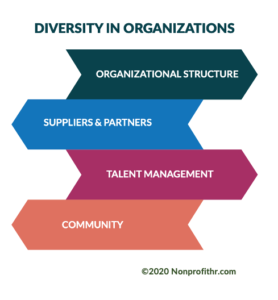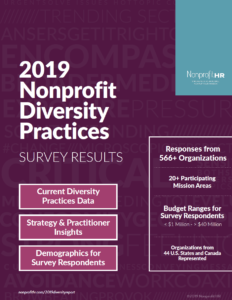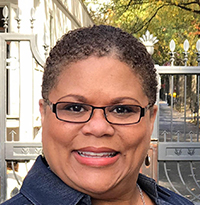WTOP: 5 ways nonprofits can…

|
While the national discussion has moved toward the triad of diversity, equity and inclusion (DEI), we have seen countless examples of unsuccessful attempts to tackle the basic foundation of diversity. Further, the types of challenges we are called on to solve speak to the fact that many nonprofits lack a true “diversity” strategy. Many human resources and senior leaders champion diversity on some level. Yet, the results of these efforts are not being captured, quantified and documented in meaningful ways that can be leveraged within their organizations or shared across the sector. Nonprofit HR subscribes to the definition of diversity in the workplace as intentionally recruiting, hiring, developing, and retaining employees who may have different backgrounds, education levels, and experiences. We believe that diversity is all-encompassing, broad and includes, but is not limited to, race and ethnicity, physical appearance, gender, national origin, religious and political beliefs, education, age, mental and physical abilities, and sexual orientation. See our official diversity statement.
|
 More than half of respondents to our 2019 Diversity Practices Survey, 52%, reported that their organization has a formal diversity statement. True diversity, however, goes beyond a statement. Inclusive of strategy, organizations can work to strengthen internal and external diversity in four core areas; organizational structure, talent management, community, and suppliers / partners. More than half of respondents to our 2019 Diversity Practices Survey, 52%, reported that their organization has a formal diversity statement. True diversity, however, goes beyond a statement. Inclusive of strategy, organizations can work to strengthen internal and external diversity in four core areas; organizational structure, talent management, community, and suppliers / partners.
Organizational Structure – Networked, hierarchical, and now digitally dispersed, organizations are challenged with the need to increase diverse representation at all levels from entry to executive level. Talent Management – Is recruiting for and developing diverse talent a check-the-box routine or an intentional effort intended to improve and advance organizational outcomes? Further, does your organization include retention and career growth when tracking and advancing diversity? Community – How reflective is your staff, leadership and board of the communities your organization serves? Tackling each internal and external stakeholder group will contribute toward community building, which ultimately leads to success for your mission. Suppliers & Partners – As a whole, social- impact organizations have done very little to showcase their strength as a buying partner within diverse communities. Diversity championing organizations such as the National Minority Supplier Development Council (NMSDC), the Women’s Business Enterprise National Council (WBENC), specialty incubators and accelerators, federal, state and local certifying organizations represent communities of diverse businesses that can help you to extend your diversity practices beyond your organization. |
 As a leading talent management firm in the social impact sector for over 20 years, we have worked with thousands of organizations to help advance their missions through their most important asset, their people. Why? Because we firmly believe in transforming workplaces through culture! As a leading talent management firm in the social impact sector for over 20 years, we have worked with thousands of organizations to help advance their missions through their most important asset, their people. Why? Because we firmly believe in transforming workplaces through culture!
Is your organization struggling to attract diverse talent? Have you conducted a compensation analysis through a racial equity lens or perhaps you need to conduct a cultural assessment? Let’s talk! |
 |
| Patty Hampton Chief Social Impact Officer & Managing Partner Nonprofit HREmail me: [email protected] Call me: 202. 785.2060 x 103 |






























